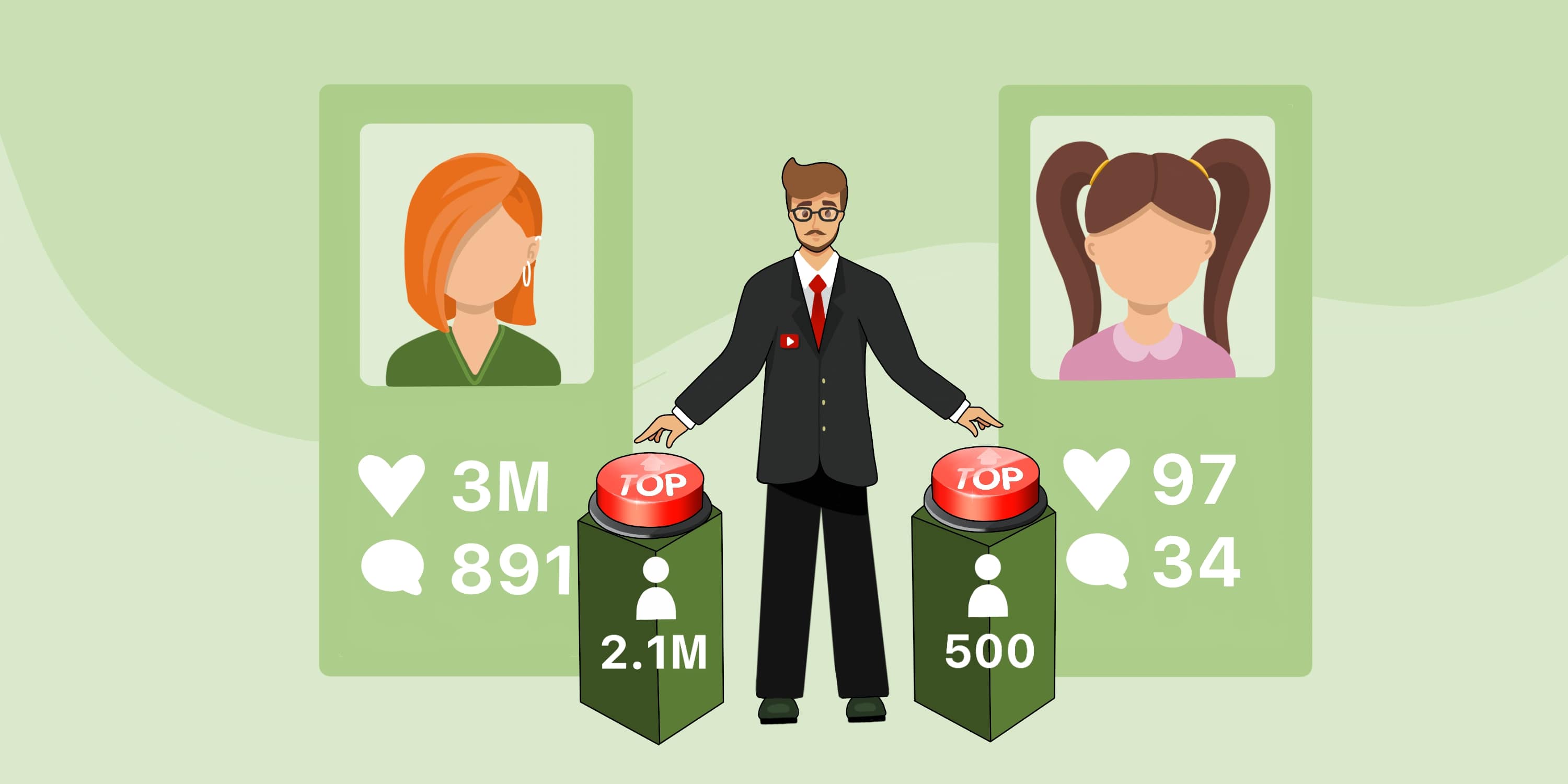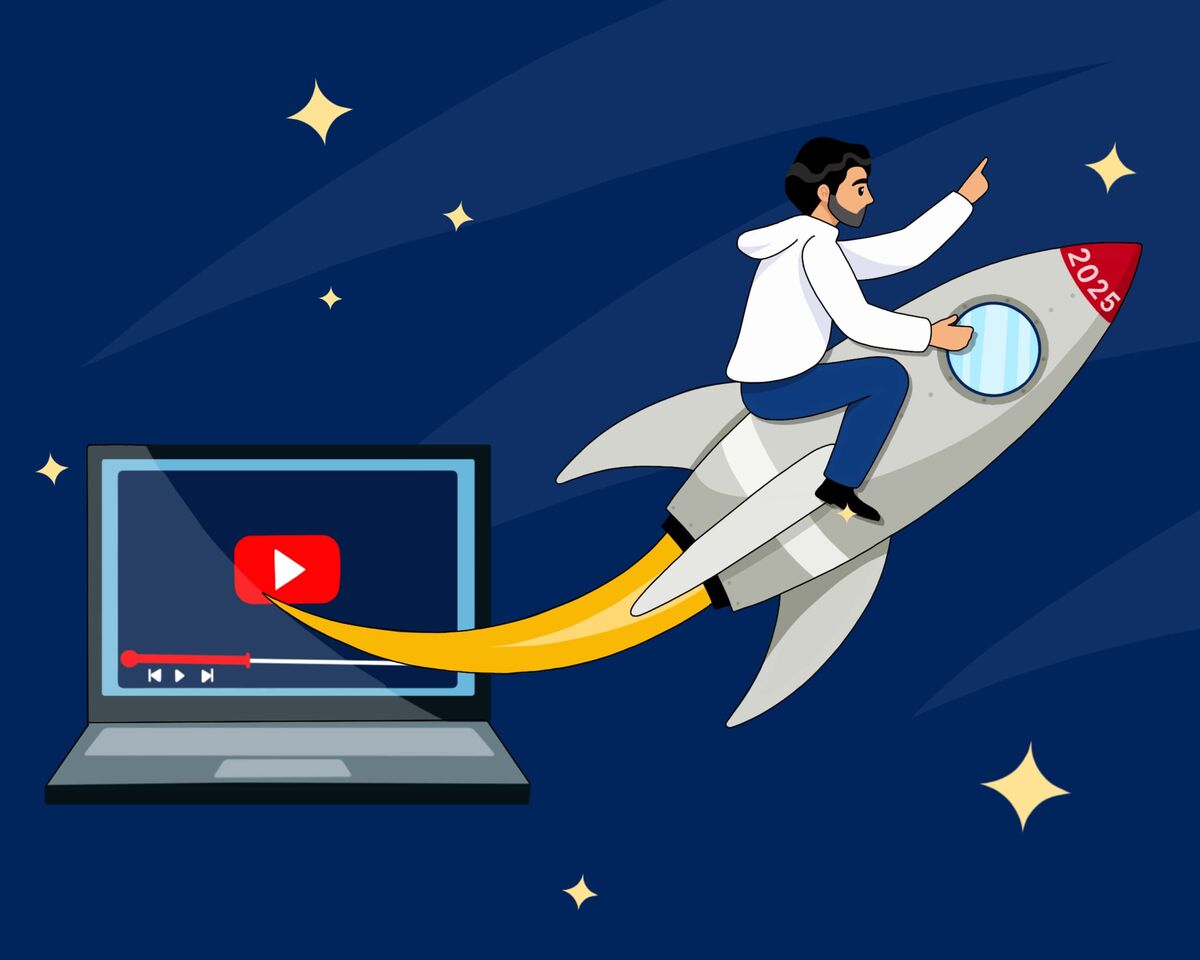Does YouTube Only Favor Big Creators, or Can Small Creators Still Succeed?

There are ongoing rumors that YouTube primarily promotes large creators. At first glance, this might seem logical: popular channels attract more viewers, generating higher profits for the platform. And, as we know, YouTube has a clear focus on maximizing revenue.
Because of this, it can feel like the odds are stacked against small creators, with the platform favoring well-established channels that dominate the homepage. This leaves many beginners questioning: what's the point of starting a YouTube channel if the platform already has its favorites?
But rumors are just that—rumors. Our mission today is to uncover the truth: does YouTube really push small creators aside?
Why Aren't Your Videos Getting Promoted on YouTube?
Let’s cut to the chase and head straight to YouTube's homepage. This recommendation feed is the central hub for users and plays a crucial role in driving traffic to videos.
YouTube analyzes viewers’ watch history, search queries, saved playlists, likes, and comments—using these factors to create a feed that aligns with their interests.
What do we see? As expected, there’s a large number of videos with hundreds of thousands of views, some even reaching millions, while others have tens of thousands. It’s in YouTube’s best interest to recommend this kind of content because, after studying our viewing habits, the platform suggests popular videos that increase the likelihood of us subscribing to those channels.
However, we also notice that every user’s feed includes videos with far fewer views—some around a thousand, and others with just over a hundred. Yet, these videos still match our interests. While the chance of stumbling upon a new creator may be smaller, it’s not impossible, and we might even end up subscribing to someone new.
At this point, YouTube has done its part. But now, several key factors determine whether we’ll click on a video:
- The title: Does it address a pain point we have as viewers? Does it match our search query or pique our interest?
- The thumbnail: Is it bright and engaging, matching our current mood? Or does it convey a serious tone, resonating with the deeper topic we’re exploring?
When these two elements align, we’re more likely to click and watch the video.
What influences our choice from here?
- The creator on screen and how they speak play a huge role. If their delivery is dull, uncertain, disorganized, or scattered with no clear structure, we’ll likely close the video within seconds. The person themselves also matters. For example, if we’re watching a video about investments and a twelve-year-old is explaining financial literacy, we’ll probably click away, even if they’re a child prodigy with a PhD. The initial dissonance between the topic and the person delivering it can drive viewers away before they even give it a chance.
- Next, we have the video’s quality—both in terms of visuals and audio. While these aren’t the primary factors, they still significantly impact whether viewers stick around. Even if the content is valuable, poor sound—whether it’s distorted, peaking, or filled with background noise—can quickly test a viewer’s patience. The same applies to visuals. If the video looks like it was shot on an old intercom, it’s unlikely to impress or hold attention.
As you can see, there are many factors that must align for a viewer to want to subscribe. YouTube is taking a considerable risk by recommending such videos to its users, which is why they appear so infrequently—leading to the misconception that they don’t exist at all.
Every monetized platform operates through a specific chain. On YouTube, it looks like this:
People watch videos → YouTube shows them ads → The more people watch videos, the more revenue YouTube earns from ad displays.
But that’s not the whole story.
The more viewers watch ads → The more products they buy → The more advertisers return to YouTube to place ads.
And closing this loop, of course, is: “YouTube needs even more viewers.”
What can we take away from this?
- YouTube does give exposure to new creators, but not as frequently as it does for larger ones.
- Whether or not your video gets recommended again by YouTube’s algorithms depends on the quality of your content.
If your video doesn’t meet the platform’s expectations—and YouTube expects it to engage viewers—there’s no incentive for the platform to keep promoting content that is repeatedly overlooked.
Is it beneficial for YouTube to give newcomers a chance?
Let’s imagine that YouTube operates like traditional television, with its own set of rules. Have you ever noticed how TV programming is structured?
In the morning, for example, viewers are typically offered the news. People are getting ready for work, their minds not yet cluttered with daily concerns, so their attention is easier to capture. From lunchtime until the end of the workday, reruns or light entertainment programs take over. This allows those at home to keep the TV on in the background while they go about their day. During this time, it’s essential not to air anything too engaging or irritating, as busy viewers don’t want to be distracted, yet they also don’t want complete silence.
Evening is prime time. Around 6–7 PM, the highest-rated shows and major news segments are broadcast because that’s when the largest audience is available. This is the most valuable airtime. Later at night, more niche programming, like late-night shows or horror films, caters to specific tastes as some viewers head to bed while others stay tuned.
So, why is this example useful to us?
Now, imagine if TV stations only aired high-rated shows all day—news every 30 minutes, for example. The viewer influx would likely drop, making it unprofitable for channels to air such programming constantly. That’s why they mix a variety of content throughout the day.
We see a similar structure in cinemas. Prime time for movies is during highly anticipated premieres, but it also varies by season and showtime. Movies expected to perform poorly are often released during off-peak times, like summer breaks when people are busier. On the other hand, major blockbusters are released during the winter holidays when people are more likely to spend time indoors. Morning movie tickets are cheaper to offset lower attendance, while evening prices rise as more people fill the theaters.
Now, let’s return to YouTube.
We’ve already established that attracting as many viewers as possible is essential for the platform. It’s how YouTube achieves high profits and maintains its leading position among other video hosting sites. But if attracting viewers is so critical, how can the platform ignore new channels?
After all, every large creator was once a newcomer. If YouTube had stifled their growth by not offering exposure or recommendations, would they have become the successful creators they are today?
Is it possible to break through in YouTube’s highly competitive environment?
Take, for example, creators like MrBeast and PewDiePie.
Let’s start with PewDiePie, whose real name is Felix Kjellberg.
Felix created his channel back in 2010. Even then, many creators were complaining that all the top spots were taken and that joining YouTube was pointless. But Felix chose to ignore the naysayers, uploading his Let's Plays purely for fun.
In the beginning, things didn’t go smoothly. Felix was shy in front of the camera, and his videos didn’t immediately resonate with viewers. He also wasn’t financially well-off, so serious promotion wasn’t an option. During this time, he balanced his budding YouTube career with working as a waiter and a deckhand on a tourist boat.
It wasn’t until three years later, after releasing countless videos and growing more confident in his humor and on-camera presence, that PewDiePie finally achieved not only high view counts but also the title of the most popular YouTuber.
For six years, until 2019, PewDiePie maintained his leading position, and to this day, he still holds the record for the longest run as the "most popular YouTuber."
Now, let’s move on to the most popular YouTuber in 2024—MrBeast, whose real name is Jimmy Donaldson. Jimmy created his channel two years after Felix, and his journey also did not begin with massive viewer adoration.
MrBeast started by creating faceless Minecraft videos that didn’t capture much audience interest. However, he became obsessed with studying YouTube’s algorithms and viral content. Jimmy dropped out of college and spent five years focusing solely on cracking the platform’s code.
A quick disclaimer: we don’t recommend following MrBeast’s exact path, as it doesn’t guarantee fame or popularity.
It took Jimmy three years to start seeing significant results because he finally understood how viral content worked. In his videos, he began pushing himself to extremes, depriving himself of sleep, food, and water. He filmed himself watching songs, music videos, and sketches for extended periods—like watching a short viral clip for ten hours straight.
These endurance videos started to gain him views and subscribers. Notably, Jimmy was a huge fan of PewDiePie, and he never intended to surpass him. Instead, his goal was to keep YouTube a platform for real people and creators, rather than letting corporations like the Indian music channel T-Series dominate.
Despite his noble intentions, MrBeast eventually surpassed both T-Series and his idol PewDiePie. In 2024, after years of effort, he earned the title of "most popular YouTuber."
What can we take from this?
First, you don’t need to be a billionaire to succeed on YouTube. The key is to think strategically, study your competitors, and create content that resonates with viewers.
Second, people will always claim that all the spots are taken and niches are overcrowded. This is often driven by the fear of failure: “If I start on YouTube, nothing will happen. Everyone is better than me; I have nothing new to offer.”
But as we’ve seen, it’s never too late. If you have a passion for creating, bringing value, or showcasing your talents to the world—do it despite the stereotypes and fears.
The bottom line: your task is to create quality content and follow YouTube’s rules. The audience will find you, no matter the number in your “Subscribers” column.
So, is it possible to succeed on YouTube? Absolutely!
Whether you’re just starting out or building on what you’ve already created, there’s always room for growth. Every video is a new opportunity to connect with your audience and improve. Remember, both PewDiePie and MrBeast began their journeys without fame, fortune, or fancy equipment. What set them apart was their determination, willingness to learn, and commitment to their craft.
You have the power to follow that same path. With the right mindset, consistent effort, and a love for what you do, YouTube can become a platform where your unique voice is heard and celebrated.
The journey might not always be easy, but if you stick with it, the rewards can be more than worth it. Keep creating, keep improving, and most importantly—have fun while doing it. Your breakthrough could be just one video away!




